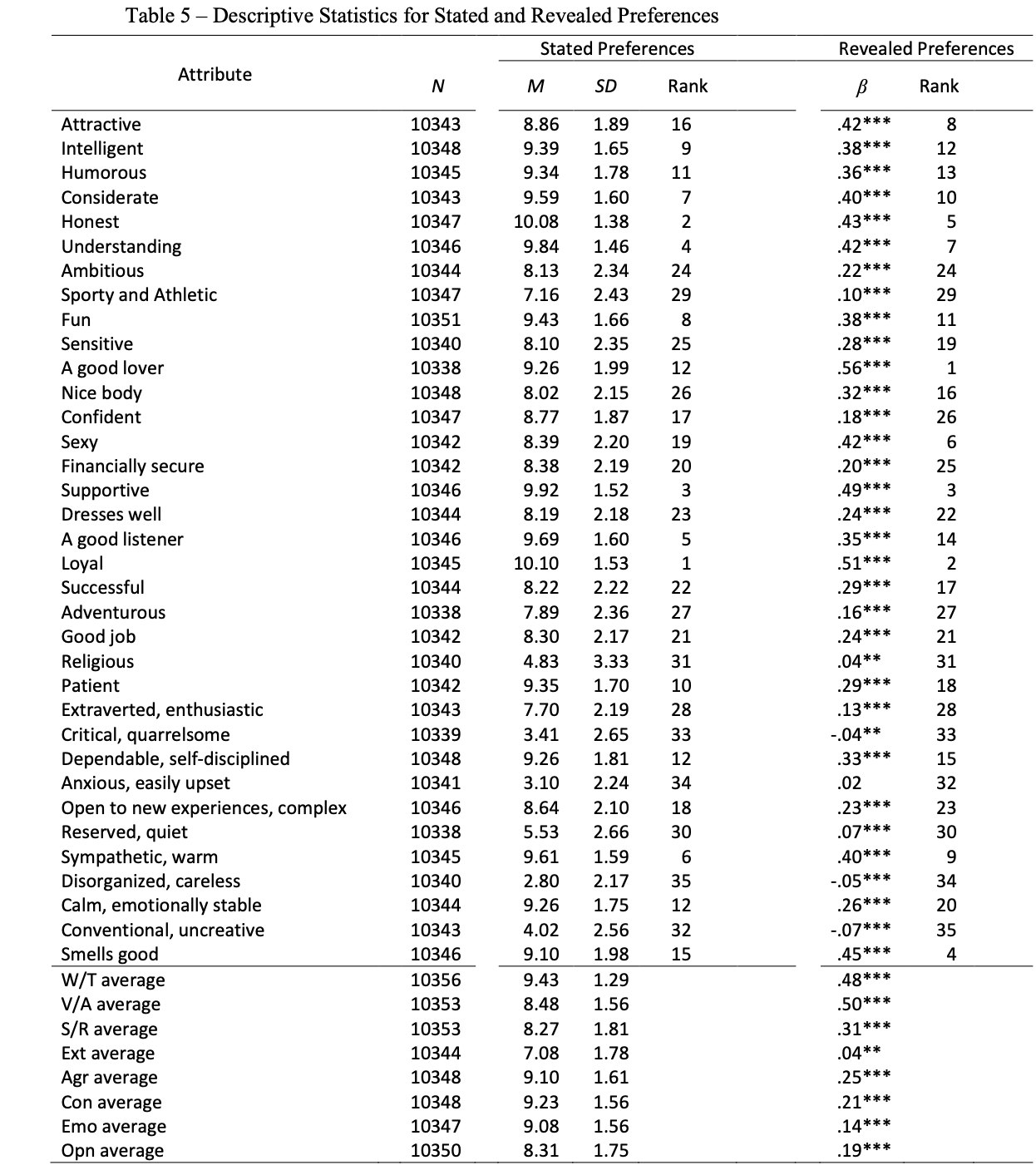Researchers Present the Rating of Ideal Life Partner Traits

An international research team surveyed over 10,000 respondents across 43 countries to examine how closely the ideal image of a romantic partner aligns with the actual partners people choose, and how this alignment shapes their romantic satisfaction. Based on the survey, the researchers compiled two ratings—qualities of an ideal life partner and the most valued traits in actual partners. The results have been published in the Journal of Personality and Social Psychology.
For many years, researchers have believed that satisfaction in a romantic relationship depends on how well one’s partner fits the ideal image of them, including factors such as intelligence, sense of humor, and appearance. This idea is supported by the ‘matching hypothesis.’ Scientists have repeatedly tested this theory, but results proved to be contradictory. Perhaps this is due to differences in the participants’ marital status. As a rule, the hypothesis was confirmed in studies with people in long-term relationships, but failed in experiments with participants who have not yet found a partner.
An international team of scientists from more than 40 countries, including researchers from HSE University, conducted the largest-scale verification of the matching hypothesis. The global survey involved 10,358 respondents from 43 countries, including Russia.
The researchers asked the participants to rate those traits they considered most desirable in an ideal partner and then to apply these criteria to real people they knew personally. People in a relationship described their current partner, while singles described a person with whom they would like to be in a romantic relationship.
Based on the results, the authors compiled a rating of ideal partner traits (stated preferences) and a rating of traits that influence the evaluation of a real romantic partner (revealed preferences).
It turned out that the stated and revealed preferences mostly coincided, albeit with some interesting discrepancies. For instance, such qualities as ‘confident,’ ‘a good listener,’ ‘patient,’ and ‘calm’ showed a significantly higher rating in the list of stated preferences vs revealed ones. On the other hand, such attributes as ‘attractive,’ ‘a good lover,’ ‘beautiful body,’ ‘sexy,’ and ‘smells good’ have a much higher rating among the revealed preferences. Moreover, the ‘good lover’ attribute was rated highest in terms of revealed preferences, while holding the 12th position out of 35 in terms of ideal preferences.
The researchers also looked into the differences between men and women in categories most important to people: attractiveness (the average of ‘attractive,’ ‘beautiful body,’ and ‘sexy’) and earning potential (the average of ‘ambitious,’ ‘financially secure,’ and ‘good job’). As a rule, men underestimated the importance they attached to concepts such as ‘attractiveness,’ ‘beautiful body,’ and ‘sexuality’ by about six ranks, while women underestimated these three traits by 13 ranks. As for ‘ambition,’ ‘financial security,’ and ‘good job,’ men undervalued them by an average of four ranks in their rating of ideal traits, while women, on the contrary, overvalued these traits to the same degree.

‘It turns out that both sexes underestimate the importance of attractiveness, but women much more so than men: the features they do not consider important turn out to be among the highest priorities in real life. At the same time, men underestimate—while women, on the contrary, overestimate—the importance of such qualities as ambition, financial security, and having a good job. As a result, despite the differences in the stated attitudes, in real life, men’s and women’s preferences are largely the same,’ explains Albina Gallyamova, a junior research fellow at the HSE Centre for Sociocultural Research. ‘However, the question remains: are our real preferences being adjusted due to the changing social structure, or are we actually much less different from each other in terms of basic attitudes than we think?’
The data obtained will help to better understand how people establish and maintain relationships. Therefore, the impact of perfect matching is slightly lower for long-term partners than for those seeking a relationship. ‘Our research shows that while matching one’s ideal does play a role, it should not be overestimated. People can form successful relationships with partners who do not fully meet their ideal criteria,’ Albina Gallyamova explains.
See also:
HSE Scientists Reveal How Disrupted Brain Connectivity Affects Cognitive and Social Behaviour in Children with Autism
An international team of scientists, including researchers from the HSE Centre for Language and Brain, has for the first time studied the connectivity between the brain's sensorimotor and cognitive control networks in children with autism. Using fMRI data, the researchers found that connections within the cognitive control network (responsible for attention and inhibitory control) are weakened, while connections between this network and the sensorimotor network (responsible for movement and sensory processing) are, by contrast, excessively strong. These features manifest as difficulties in social interaction and behavioural regulation in children. The study has been published in Brain Imaging and Behavior.
Similar Comprehension, Different Reading: How Native Language Affects Reading in English as a Second Language
Researchers from the MECO international project, including experts from the HSE Centre for Language and Brain, have developed a tool for analysing data on English text reading by native speakers of more than 19 languages. In a large-scale experiment involving over 1,200 people, researchers recorded participants’ eye movements as they silently read the same English texts and then assessed their level of comprehension. The results showed that even when comprehension levels were the same, the reading process—such as gaze fixations, rereading, and word skipping—varied depending on the reader's native language and their English proficiency. The study has been published in Studies in Second Language Acquisition.
Mortgage and Demography: HSE Scientists Reveal How Mortgage Debt Shapes Family Priorities
Having a mortgage increases the likelihood that a Russian family will plan to have a child within the next three years by 39 percentage points. This is the conclusion of a study by Prof. Elena Vakulenko and doctoral student Rufina Evgrafova from the HSE Faculty of Economic Sciences. The authors emphasise that this effect is most pronounced among women, people under 36, and those without children. The study findings have been published in Voprosy Ekonomiki.
Scientists Discover How Correlated Disorder Boosts Superconductivity
Superconductivity is a unique state of matter in which electric current flows without any energy loss. In materials with defects, it typically emerges at very low temperatures and develops in several stages. An international team of scientists, including physicists from HSE MIEM, has demonstrated that when defects within a material are arranged in a specific pattern rather than randomly, superconductivity can occur at a higher temperature and extend throughout the entire material. This discovery could help develop superconductors that operate without the need for extreme cooling. The study has been published in Physical Review B.
Scientists Develop New Method to Detect Motor Disorders Using 3D Objects
Researchers at HSE University have developed a new methodological approach to studying motor planning and execution. By using 3D-printed objects and an infrared tracking system, they demonstrated that the brain initiates the planning process even before movement begins. This approach may eventually aid in the assessment and treatment of patients with neurodegenerative diseases such as Parkinson’s. The paper has been published in Frontiers in Human Neuroscience.
Civic Identity Helps Russians Maintain Mental Health During Sanctions
Researchers at HSE University have found that identifying with one’s country can support psychological coping during difficult times, particularly when individuals reframe the situation or draw on spiritual and cultural values. Reframing in particular can help alleviate symptoms of depression. The study has been published in Journal of Community Psychology.
Scientists Clarify How the Brain Memorises and Recalls Information
An international team, including scientists from HSE University, has demonstrated for the first time that the anterior and posterior portions of the human hippocampus have distinct roles in associative memory. Using stereo-EEG recordings, the researchers found that the rostral (anterior) portion of the human hippocampus is activated during encoding and object recognition, while the caudal (posterior) portion is involved in associative recall, restoring connections between the object and its context. These findings contribute to our understanding of the structure of human memory and may inform clinical practice. A paper with the study findings has been published in Frontiers in Human Neuroscience.
Researchers Examine Student Care Culture in Small Russian Universities
Researchers from the HSE Institute of Education conducted a sociological study at four small, non-selective universities and revealed, based on 135 interviews, the dual nature of student care at such institutions: a combination of genuine support with continuous supervision, reminiscent of parental care. This study offers the first in-depth look at how formal and informal student care practices are intertwined in the post-Soviet educational context. The study has been published in the British Journal of Sociology of Education.
AI Can Predict Student Academic Performance Based on Social Media Subscriptions
A team of Russian researchers, including scientists from HSE University, used AI to analyse 4,500 students’ subscriptions to VK social media communities. The study found that algorithms can accurately identify both high-performing students and those struggling with their studies. The paper has been published in IEEE Access.
HSE Scientists: Social Cues in News Interfaces Build Online Trust
Researchers from the HSE Laboratory for Cognitive Psychology of Digital Interface Users have discovered how social cues in the design of news websites—such as reader comments, the number of reposts, or the author’s name—can help build user trust. An experiment with 137 volunteers showed that such interface elements make a website appear more trustworthy and persuasive to users, with the strongest cue being links to the media’s social networks. The study's findings have been published in Human-Computer Interaction.



